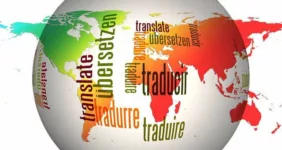Translation services are in high demand these days for one simple reason. Now, more than ever, online businesses know they must reach across national and linguistic borders to meet and exceed their KPIs. Translation services have arisen to meet that need, but the demand outstrips the supply. Freelancers and software algorithms fill a gap that translation companies are unable or unwilling to fill, taking advantage of lower costs for these alternatives. We will consider a digital startup’s best ways to achieve and optimize a multilingual marketing strategy.
The Need for Translation: Why isn’t the World in Love with English?
It’s often forgotten by English speakers, accustomed to working in their global language of business, but most of the world doesn’t understand what you’re saying. Yes, English is indeed the most spoken language, clobbering the Chinese for top honors. Mandarin, obviously, has a huge advantage in native speakers. English earns its top position by being a second language, with varying degrees of fluency, to more than two billion people. But that still leaves 7-plus billion who don’t have a clue what you say. Your startup needs to grasp that as a fundamental fact driving your global marketing strategy.
There is undeniably an undercurrent of resentment for companies that rely primarily on English as a marketing language rather than take the extra step of translating digital content and social media. When you look at it from the perspective of the foreign audience, imposing English on them betrays an imperious arrogance, suggesting that speaking their language is not worth the effort, that it’s “my way or the highway.” Indeed, they may justifiably see them as being “consumers” (eaters) of your products and services, a “target” market to be shot at and, in the best case, hit. It’s not surprising, then, that an English-first attitude often misses the mark.
Cheaper (or Free) is Not Always Better: What Gets Lost in Machine Translation?
These days, every digital startup is confronted with the temptation to exploit advances in machine translation. All tech giants have invested heavily in translation tools, recognizing the importance of speaking the language of users for attracting and engaging their attention. As usual, the way to habituate users, and companies, is to offer something valuable for free. Google Translate, for example, is ubiquitous, with more than 500 million active users and some 143 billion processes per day. Its Translation API automates the ability of applications to seamlessly convert one language to another. Facebook builds a translator into its social networking platform, reaching more than 2 billion users.
With a programming effort, each digital startup can integrate these tools, or the translation utilities of Zapier and IFTTT, into their apps. What is often lost in these efforts is language quality. Native speakers are not easily fooled by automatic translations. So you risk losing their allegiance if you rely solely on algorithms for high profile translation of your valuable content.
Time is Money: What are the Hidden Costs of Freelance Translators?
Digital startups may well find it tempting to turn to online freelance marketplaces like Upwork and Freelancer.com for their translation resources. Individual translators are available in many languages at rates often a fraction of those offered by translation agencies. It is relatively easy to post a gig and get dozens of responses. The platform provides communication and escrow services to mediate between client and freelancer.
One drawback of these services is the time they demand. They force the client to manage each freelancer. This can work if you need to translate one language, but it becomes unmanageable for two or more. Too many things can go wrong, and there is little accountability should the freelancer miss a deadline, submits inferior work, or passes off a machine translation as an original one. Reputable translation agencies assume much of the time burden and have strict training certification and quality assurance protocols in place, including guarantees on work quality even after delivery.
Top-Down Thinking: Why are Top Translation Services the Best Bet?
If you have been convinced of the advantages of working with a professional services agency rather than relying on machine translation, translation APIs, and low-cost freelancers, the question still remains as to how to pick the best translation and localization services for your unique niche in the digital startup ecosphere. Last year, TG daily featured a survey of some of the top translation service providers. That may be a good place to start.
Digital startups need every bit of leverage to maximize their potential so working with a top translation service is advisable. According to Ofer Tirosh, CEO of Tomedes, the advantage of working with translation services is that they have the manpower and infrastructure to scale to your needs. Larger agencies have the additional advantage of being able to support a wider variety of languages and language pairs as well as being equipped with digital solutions for faster delivery with more accurate results.
Working from the top down with a top localization agency, in short, prevents your multilingual marketing, and your brand values, from getting lost in translation.
Written by Lara Harper








